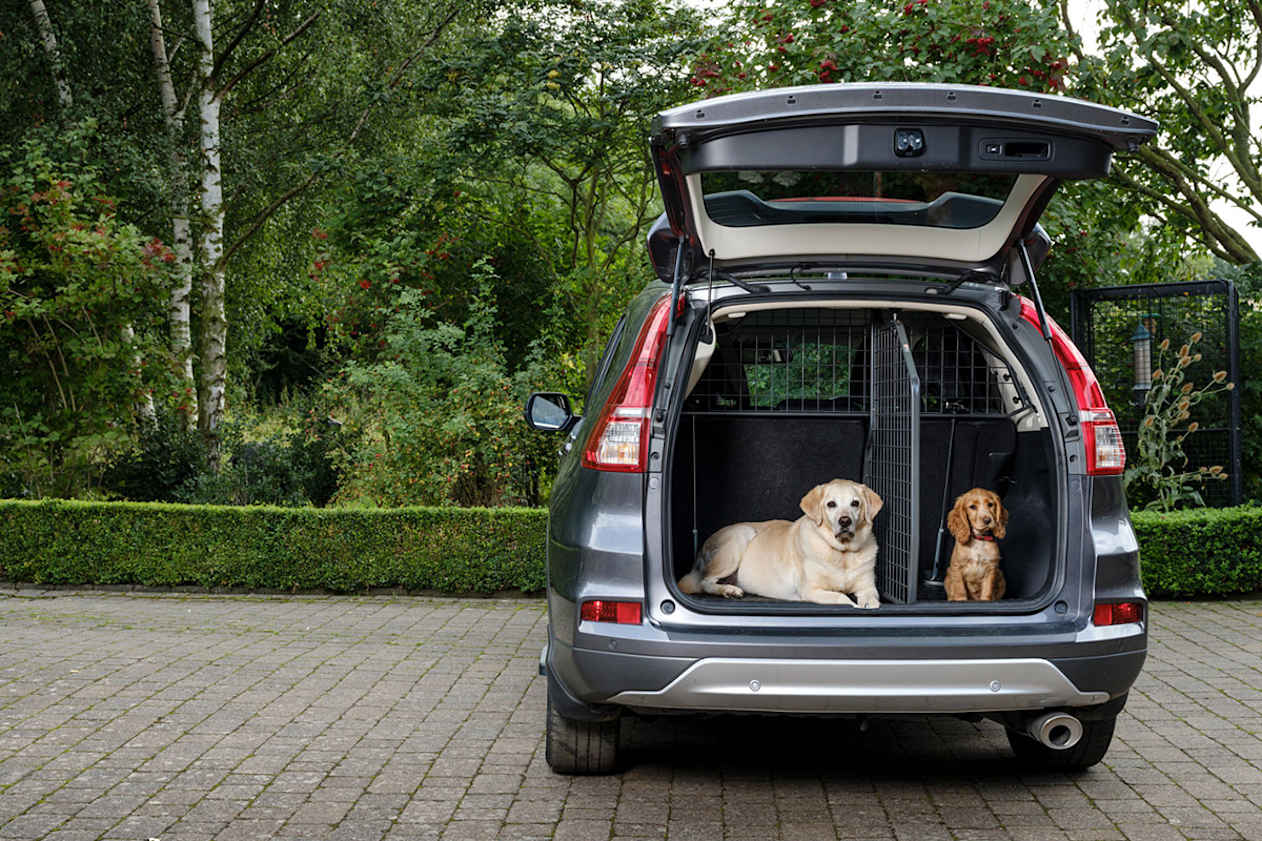If you own a station wagon or SUV and you’re a pet owner, chances are you have already thought about what the best dog car barrier might be for your particular vehicle.
Indeed, the best pet barrier for an SUV may well be different depending on the type of vehicle you have… and indeed on the size of the animal you’re intending to carry.
For definition’s sake, a pet barrier is best described as an item that divides the luggage or cargo area of a vehicle from the passenger area. From there, the gamut of devices available to separate human and beast is very wide.
In fact, the device itself is known by many names, including a partition, grill, gate or separator. All do exactly the same job, just in different ways.
When it comes to choosing the correct barrier for your particular use, it essentially comes down to a couple of key points; how much you want to spend, how big your pupper is and how permanently you want to install the barrier.
At the bottom end of the cost scale, a fabric barrier is easily the cheapest way to divide the car at less than $100, but generally speaking, it’s not very strong, a pain to fit and remove, and can also restrict rearward vision for the driver. We wouldn’t recommend them as a reliable method to restrain a dog in the rear area of any vehicle.

One style of cloth barrier that is more suitable is designed specifically for the Jeep Wrangler, and resembles an aircraft cargo net that is mounted on the vehicle’s roll-over hoop and to the floor. These are a US design but can be sourced locally.
Next along the cost line is the backseat barrier or universal barrier, which generally mounts on the rear headrest rails and uses telescopic rods to fine-tune the fit across the relevant space. The seat-backs make up the majority of the divider, and the backseat barrier fills the gap above.
Cars like the Ford Focus, Mini Cooper and Mazda3 would be suitable candidates for such a barrier, as would the Honda CR-V and Mitsubishi Outlander.

At a cost of between $150 and $300, it’s certainly a cost-effective way to create a pet cargo barrier, but the tradeoff can be a less-than-perfect fit in your vehicle, as well as fiddly assembly.
As well, having large clamps around the headrest rails does marginally increase the risk of injury to rear seat passengers, while the barrier is unlikely to restrain a large dog or piece of unsecured cargo in a serious crash.
The most secure kind of barrier is also the most expensive kind (of course). A cargo barrier that is specifically designed for your car is by far the best way to safely separate your dog from the car’s occupants, and also gives your faithful hound the best chance of survival if the unthinkable happens.
A properly fitted pet cargo barrier extends from the floor to the ceiling, and often uses mounting points built into the car’s bodywork for installation. As well, vertical dividers can often be incorporated into the structure to provide individual spaces for two dogs to travel separately.
The dogs can also be harnessed to the barrier to provide additional protection in the case of a crash… or simply to prevent a naughty pup from doing a runner when the cargo space is opened.

The downside with the majority of custom fitted barriers is that they are often much more complex to remove, and their physical size makes them tougher to store in the garage.
More expensive makes like Black Hound do build barriers that can be disassembled quickly, while industry stalwarts like Milford also build a wide array of ADR-compliant barriers for cars like the Hyundai Tucson, Toyota RAV4, Nissan X Trail and Subaru Forester.
Many off-road supplies stores in rural Australia either stock or build their own cargo barriers for vehicles like the Toyota LandCruiser, Jeep Grand Cherokee, Land Rover Discovery and Nissan Patrol that would also serve well as a dog barrier.
So assess your budget, how often you need to use your entire cargo area and just how often your furry friends come for a ride, and then you’ll be a better position to assess just what kind of pet cargo barrier best meets your needs.




.jpg)




